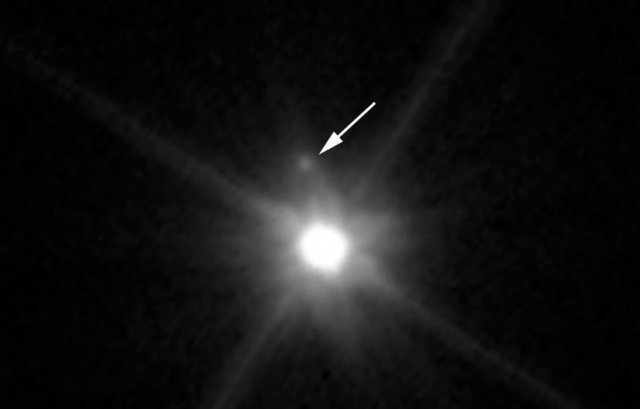-
Tips for becoming a good boxer - November 6, 2020
-
7 expert tips for making your hens night a memorable one - November 6, 2020
-
5 reasons to host your Christmas party on a cruise boat - November 6, 2020
-
What to do when you’re charged with a crime - November 6, 2020
-
Should you get one or multiple dogs? Here’s all you need to know - November 3, 2020
-
A Guide: How to Build Your Very Own Magic Mirror - February 14, 2019
-
Our Top Inspirational Baseball Stars - November 24, 2018
-
Five Tech Tools That Will Help You Turn Your Blog into a Business - November 24, 2018
-
How to Indulge on Vacation without Expanding Your Waist - November 9, 2018
-
5 Strategies for Businesses to Appeal to Today’s Increasingly Mobile-Crazed Customers - November 9, 2018
Hubble spots a Makemake moon
Hubble recently discovered a new moon in our solar system, demonstrating how much more there is to learn about our small neighborhood in the galaxy. But the newly found object, provisionally called MK 2, orbits Makemake almost edge-on from our point of view, meaning most of the time it’s obscured by the comparatively bright dwarf planet. MK2 was found 13,000 miles from Makemake, which is named after the creation deity in the Rapa Nui mythology of Easter Island.
Advertisement
The moon is nicknamed MK 2, and astronomers first discovered it a year ago using the Hubble Telescope.
It is the first satellite to be discovered circling Makemake, an 870-mile wide dwarf planet discovered in 2005.
Scientists said the discovery is further evidence that dwarf planets way out in the Kuiper Belt – well beyond the orbit of Neptune – do, indeed, have moons. Because the moon orbits Makemake at such a close distance it can be hard to spot in the glare of the dwarf planet. Hubble’s unique ability to see faint objects near bright ones, together with its sharp resolution, allowed astronomers to pluck out the moon from Makemake’s glare. This data suggests that MK 2 formed from debris liberated from Makemake by an impact; passing objects that are captured by planets typically have eccentric orbits. The discovery was announced today in a Minor Planet Electronic Circular.
Makemake is, on average, 4.2 billion miles from the sun, which is 600 million miles farther away than Pluto.
The moon, nicknamed MK 2, is estimated to be about 100 miles in diameter. Researchers hope the finding will help shed light on Makemake’s origins.
Advertisement
“You might imagine you could paint this moon dark with a transitory Makemake-ian atmosphere”, Parker says. Further observations will be needed to determine if MK2’s orbit is circular or oval. In the meantime, Makemake joins a short list of Kuiper Belt Objects known to have moons, including Pluto, Eris, Quaoar, and Haumea. The team’s reanalysis, based on the new Hubble observations, suggests that much of the warmer surface detected previously in infrared light may, in reality, simply have been the dark surface of the companion MK 2. One idea is that, unlike larger objects such as Makemake, MK 2 is small enough that it can not gravitationally hold onto a bright, icy crust, which sublimates, changing from solid to gas, under sunlight. This same process likely creates the red patches on Pluto’s moon Charon’s north pole.




























